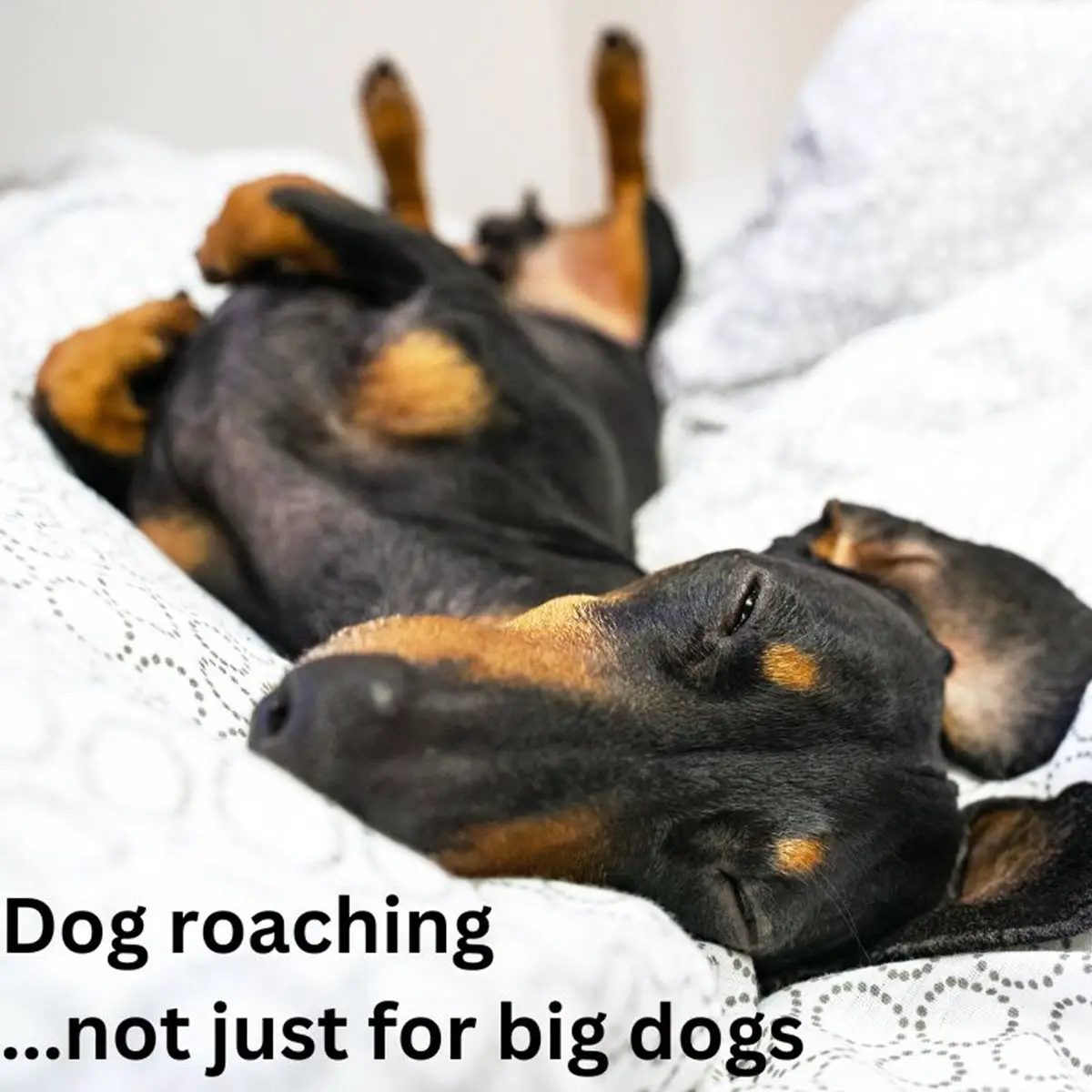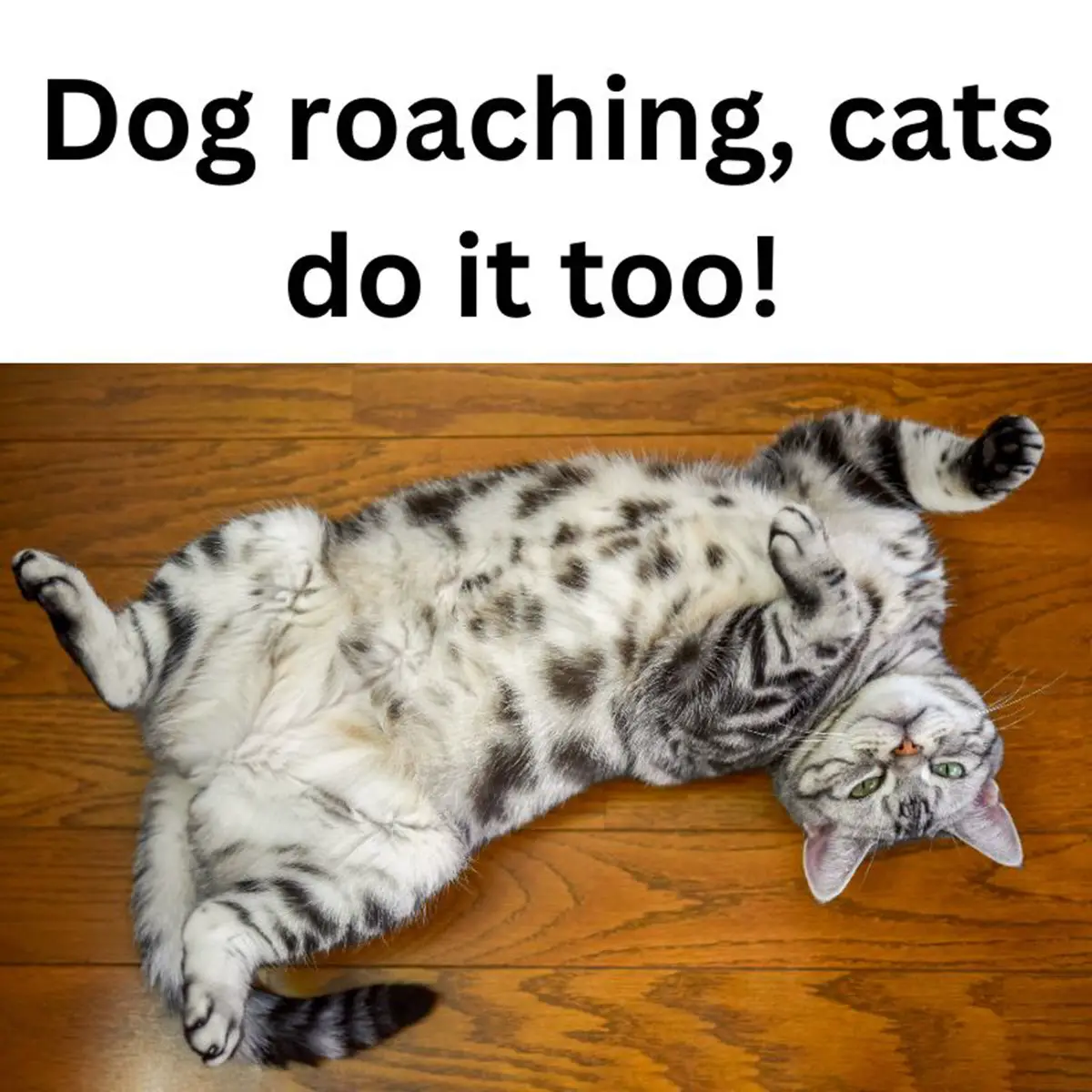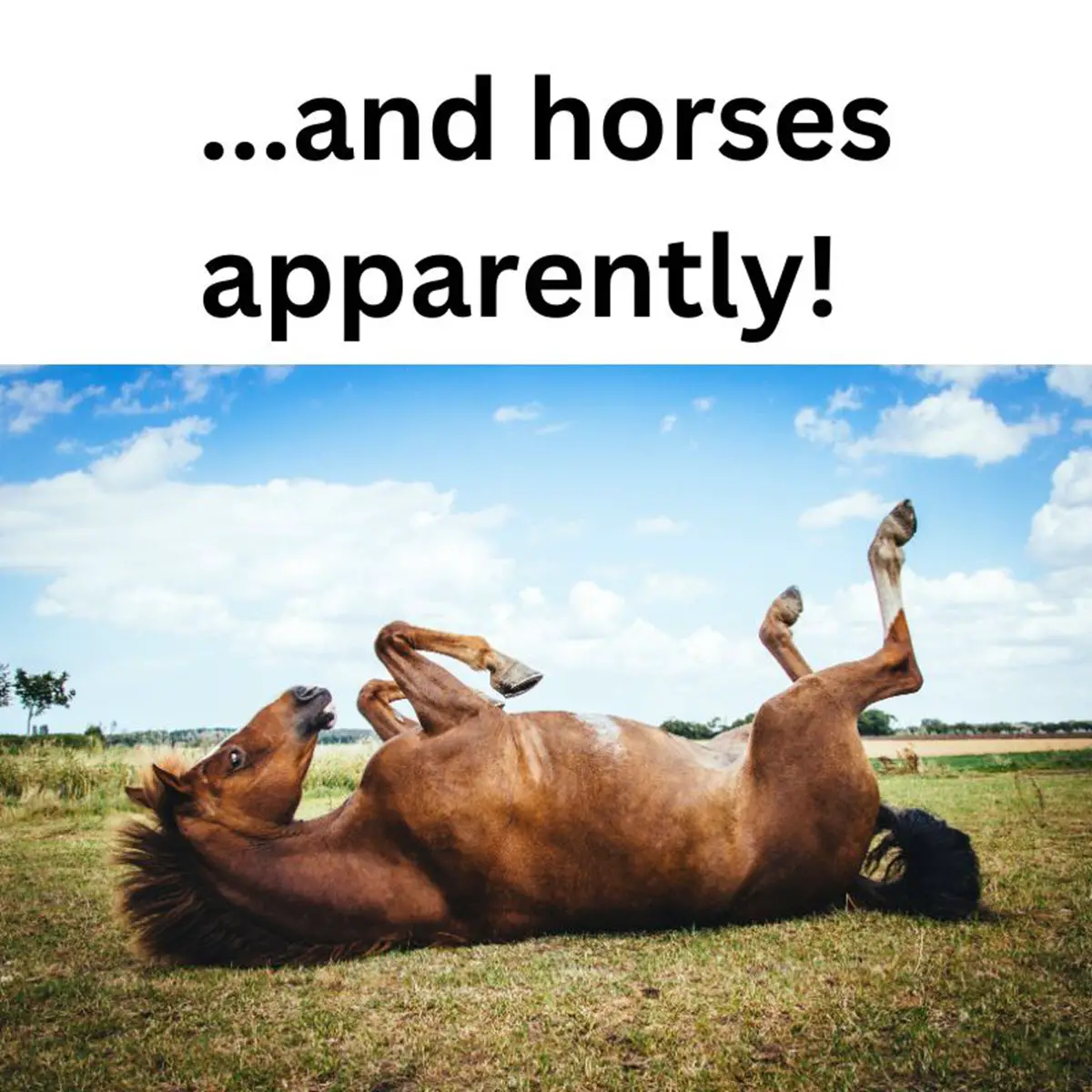Dog roaching is a term used to describe a position that dogs assume when they sleep or relax. It involves the dog lying on its back with its legs in the air, and it looks like the dog is playing dead or doing a backflip. Roaching is common in many dog breeds but particularly prevalent in greyhounds and other dogs with long legs and deep chests.
We have a lot of dogs and see them roaching daily. I have always wondered why dogs do it. After researching, I have discovered that roaching is a sign of relaxation and comfort. When dogs feel secure, and at ease in their environment, they are more likely to assume this position. Additionally, roaching is a way for dogs to regulate their body temperature, exposing their belly to cool air.
Key Takeaways
- Roaching is a common position that dogs assume when they sleep or relax.
- Roaching is a sign of relaxation, comfort and a way for dogs to regulate their body temperature.
- Deep-chested and long-legged dogs seem to find the roaching position comfortable. Greyhound owners are particularly used to seeing this behavior.

Understanding Dog Roaching
Roaching is when a dog lies on their back with their legs in the air, looking like a dying cockroach. It can be an odd sight, but it’s typical dog behavior.
When a dog roaches, it’s usually a sign that they are comfortable and relaxed in their environment. It’s a vulnerable position, and dogs only assume it when they feel safe. So, if you see your dog roaching, it indicates they are happy and content.
Roaching is not just a sleeping position for dogs; they can also assume it when awake. It’s a way for them to stretch their muscles and relieve tension in their back. It also allows them to cool down on a hot day as it exposes their belly to the air.
In summary, roaching is a natural behavior for dogs, and it’s a sign that they are comfortable and relaxed. It’s a vulnerable position, so dogs only assume it when they feel safe. If your dog enjoys roaching, it’s an excellent way to stretch its muscles and cool down on a hot day.
Dog Roaching vs. Roach Back Dogs
This article concerns dog roaching, when dogs lay on their backs like dead roaches. Roach back dogs are an entirely different subject. We have written a completely different article about roach back dogs, where the dog’s topline is not as straight as other dogs.
Roaching in Different Dog Life Stages
As a dog owner, I have noticed that my furry friend often roaches when he is relaxed and comfortable. Roaching is when a dog lies on his back with his legs in the air. It is typical behavior in dogs of all ages and life stages, but there are differences in how and why dogs roach depending on their life stage.
Puppies
Puppies are known for their playful and energetic behavior. They often roach during playtime or when they are feeling particularly relaxed. Roaching is a sign that your puppy feels comfortable and secure in its environment. It is also a way for puppies to cool down, as exposing their belly helps regulate their body temperature.
Mature Adults
As dogs enter their middle years, they become more settled and less active. Mature adult dogs still enjoy playtime and exercise but enjoy relaxing and lounging around. Roaching is a typical behavior in mature adult dogs, as it allows them to stretch out and get comfortable. It also indicates they feel secure and relaxed in their environment.
Seniors
As dogs enter their golden years, they become less active and more prone to health issues. Senior dogs may roach less frequently than younger dogs, as they may need help getting up and down from the ground. However, roaching can still signify that your senior dog feels comfortable and relaxed. It is essential to provide your senior dog with a comfortable and supportive bed to help them get the rest they need.
In conclusion, roaching is expected in dogs of all ages and life stages. It is a sign that your dog feels comfortable and secure in his environment. As a dog owner, providing your furry friend with a comfortable and supportive environment is vital to help them feel relaxed and at ease.
Roaching and Dog Behavior
Roaching is typical in dogs of many breeds, including Greyhounds, Whippets, and other sighthounds. It is the act of a dog rolling over onto its back and exposing its belly to the air. This behavior is also known as “springing” or “frogging.”
Dog reaching is a natural behavior that can indicate different things depending on the dog’s personality and environment. For example, when my dog roaches, it usually means she feels relaxed and comfortable. However, some dogs may roach when they feel stressed or anxious, which can signify that they need extra attention and care.
Roaching is also believed to connect to hunting behavior in wild dogs. When wild dogs hunt, they often roll over onto their backs to avoid being bitten by their prey. This behavior is thought to have been passed down to domesticated dogs to protect themselves during play or roughhousing with other dogs.
In addition to hunting behavior, roaching can be related to a dog’s energy level. Dogs with high energy levels may roach more frequently to release their pent-up energy and relax. On the other hand, dogs that are lazy or have low energy levels may roach less often.

Overall, roaching is a natural behavior that can be seen in many different dog breeds. It can indicate a dog’s personality, energy level, and environment. As a dog owner, it is essential to understand your dog’s behavior and what it means so that you can provide them with the proper care and attention they need.
Health Concerns Related to Roaching
While roaching is not considered a health concern, excessive roaching in some breeds, such as Dachshunds, has been linked to an increased risk of intervertebral disc disease.
If your dog is roaching excessively, watching for any signs of discomfort or pain is essential. If your dog is showing signs of limping or has difficulty walking, it could be a sign of an injury or arthritis. In these cases, it’s best to consult with a veterinarian who can diagnose and treat the issue.
It’s essential to keep your dog’s health in mind and take precautions to prevent potential health issues. This includes regular visits to the veterinarian and watching for changes in your dog’s behavior or movement patterns. You can help ensure your furry friend stays happy and healthy for years by staying proactive and informed.
Do other animals roach?
Of course – it’s comfy, so why not??
I guess it should be called “cat reaching”, but since I write about dogs, I choose to call it a cat that is dog reaching:

…and horses:

So, yes, other animals get to be a little crazy and dog roach as well.
Frequently Asked Questions
Do all dog breeds have the ability to roach?
Yes, all dog breeds can roach. However, some breeds are more prone to it than others. Greyhounds, Whippets, and Italian Greyhounds are breeds known for their love of roaching.
What is the purpose of a dog roaching?
Roaching is where a dog rolls over on their back with their legs up in the air. It’s a sign that the dog feels relaxed and comfortable in their environment. Dogs may also roach to stretch their muscles or to cool off on a hot day.
Why do some dogs prefer to sleep on their backs?
Dogs who prefer to sleep on their backs may do so because it’s a comfortable position for them. It allows them to stretch their muscles and take the weight off their joints. Sleeping on their backs may also help dogs regulate their body temperature.
What are the health implications of a dog roaching?
Roaching itself is not harmful to a dog’s health. However, if a dog is roaching excessively or cannot get up from the position, it may be a sign of an underlying health issue. If you notice any changes in your dog’s roaching behavior, it’s best to consult with your veterinarian.
Are there any breeds that are known for not roaching?
While all dog breeds can roach, some breeds are less likely to do so. Breeds like Bulldogs, Pugs, and Basset Hounds have shorter legs and a heavier build, which may make it more difficult for them to reach comfortably. However, this doesn’t mean these breeds never roach, as individual dogs may have their own preferences.
That’s a wrap on the Dog Roaching!
Dog roaching is a charming and amusing behavior and a sign of contentment and relaxation in our furry companions. From their adorable upside-down poses to their blissful expressions, it’s hard not to be captivated by the joy and tranquility that dog roaching brings. So, the next time you spot your four-legged friend stretched out on their back with all four legs in the air, take a moment to appreciate the sheer bliss they exude. Embrace the delightfully quirky nature of dog roaching and let it serve as a reminder of the simple pleasures that our faithful canine companions bring to our lives.
- Newsweek magazine:
- Greyhound Home Care: Why Do Greyhounds Roach?
- Dog Discoveries: Five Dog Sleeping Position Meanings
- Dogster: 10 Bits of Greyhound Lingo You Should Know Before You Adopt
- First published in July, 2023
